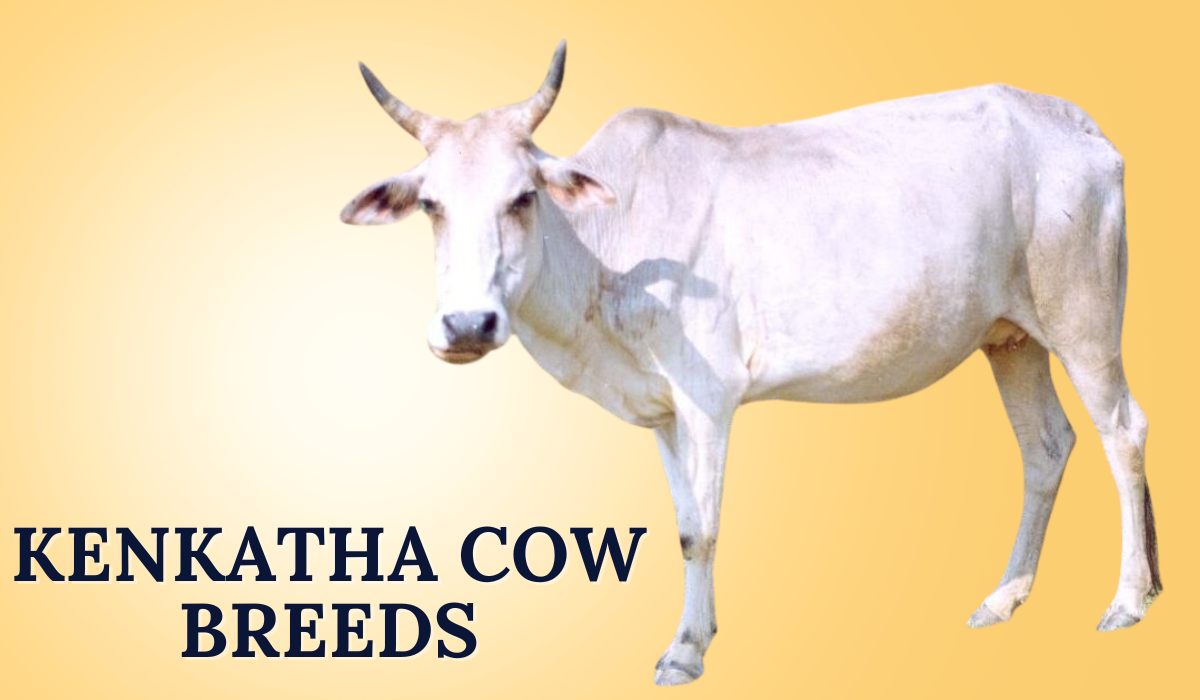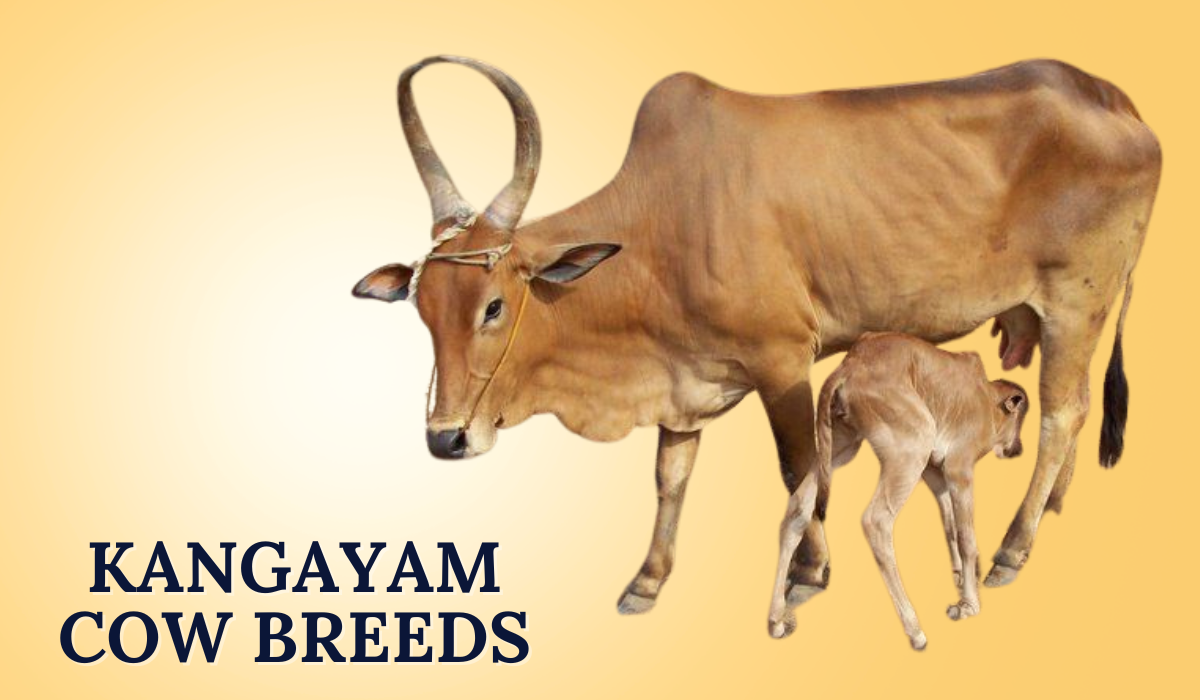The Kenkatha Cow breeds in India are named after the Ken River, reflecting their native habitat. Historically, these cows have been the backbone of agricultural practices in the Bundelkhand region. Their compact and sturdy build made them suitable for plowing fields, while their milk production met the nutritional needs of farming families.
Kenkatha Cow Breeds in India are primarily raised for both milk and draught purposes. While these cows produce a modest amount of milk compared to high-yielding breeds, their milk is rich in nutrients and many people prefer its quality. Additionally, people widely recognize Kenkatha bulls for their strength, and farmers often use them in agricultural activities such as plowing and transportation. Efforts to conserve this indigenous breed are growing, highlighting its role in sustainable farming and its importance in supporting the livelihoods of rural communities in India.
Characteristics and Pricing of Kenkatha Cows
The Kenkatha cow breeds price under 50,000 INR makes them an affordable option for farmers looking for low-maintenance livestock. These cows are medium-sized, with short legs, long curved horns, and a hump typical of Indian breeds. Their coats range from reddish-brown to gray and black, making them visually distinct.
Farmers value the Kenkatha breed not only for its milk but also for its strength in agricultural tasks. This breed is particularly useful in regions with minimal mechanization.
In terms of cost, Kenkatha cows are an economical choice. They can graze naturally and thrive with minimal care. This makes them a preferred option in rural areas. Their milk is also highly valued in local markets due to its nutritional content. The price of Kenkatha cow milk in India ranges from ₹60 to ₹80 per liter.
Physical Characteristics: Kenkatha cows are medium-sized with compact, muscular bodies. These cows excel at labor-intensive tasks such as plowing fields and pulling carts. They typically have short, smooth coats. The coat color can vary, including shades of gray, black, brown, or a mix of these hues.
Milk Production and Utility : Although they are primarily a draft breed, Kenkatha cows produce milk with a high butterfat content. This makes their milk very nutritious and suitable for household consumption. The yield is modest, typically 2-3 liters per day, but sufficient for small-scale dairy needs in rural areas.
Adaptability and Disease Resistance : A standout feature of Kenkatha cows is their adaptability to extreme climatic conditions. They can withstand droughts and heat. They thrive on minimal fodder and can survive on coarse grasses. This makes them a cost-effective option for farmers with limited resources.
Milk Production, Benefits, and Health Concerns
The milk from Kenkatha cow breed is rich in A2 beta-casein, making it a healthier option compared to A1 milk from hybrid breeds. Its digestibility and nutrient profile offer several benefits, including improved metabolism and enhanced immunity. Specific studies highlight Kenkatha cow breeds milk benefits for males, such as better hormonal balance and muscle recovery.
For skin health, Kenkatha cow breeds benefits for skin include improved texture and reduced inflammation when used in traditional treatments like ghee-based formulations. These properties make the breed’s milk increasingly popular among health-conscious consumers.
Despite its resilience, the breed is not entirely free from challenges. Common Kenkatha cow breeds diseases include mastitis and foot-and-mouth disease, which require timely veterinary care. Awareness programs about disease prevention are essential to ensure the health and productivity of these cows.
The Kenkatha cow breeds milk price per kg is competitive due to its perceived purity and high nutritional value. This pricing further boosts its demand among urban consumers seeking organic and unadulterated milk products.
- Benefits of Kenkatha Cow Milk : The milk from Kenkatha cows is nutrient-dense, offering a range of health benefits to consumers. It contains essential vitamins like A, D, and B12, along with minerals such as calcium and phosphorus, which promote bone health and boost immunity. The high butterfat content makes it easier to digest, especially for children and the people older than 70.
- Health Concerns for Kenkatha Cows : While Kenkatha cows are generally resilient, they are not entirely free from health concerns. Common issues include parasitic infections, hoof problems from prolonged fieldwork, and nutritional deficiencies in resource-scarce areas. Farmers need to ensure proper hygiene in cow sheds to prevent diseases and maintain regular deworming schedules.
Reproduction, Babies, and Religious Significance
The Kenkatha cow breeds’ pregnancy cycle is similar to other indigenous breeds, with high fertility rates ensuring sustainable herd growth. The calves of the Kenkatha cow breed are vigorous and adaptable to harsh environments, making them easy for farmers to rear in future generations.
In addition to their agricultural and nutritional value, these Cow Breeds in India hold cultural significance. Many individuals partake in Kenkatha cow breeds donation programs as a part of religious or community-driven initiatives. This act not only supports farmers but also contributes to the conservation of the breed.
Kenkatha cows for milk are a blessing for small-scale farmers, offering consistent yields and a reliable income source. Their role in rural livelihoods underscores their importance beyond economic metrics, representing sustainability and tradition.
Conclusion : The Kenkatha cow breeds in Uttar Pradesh represent a legacy of resilience, adaptability, and sustainability. One cannot overstate their contributions to agriculture, nutrition, and culture. With increasing awareness about the Kenkatha cow breed milk benefits, including its impact on male health and skin, this breed is finding renewed relevance in contemporary markets.
Efforts to conserve these cows, coupled with their affordability make them accessible to farmers. By promoting organic practices and recognizing the breed’s ecological value, India can ensure the survival of this indigenous asset for generations to come



